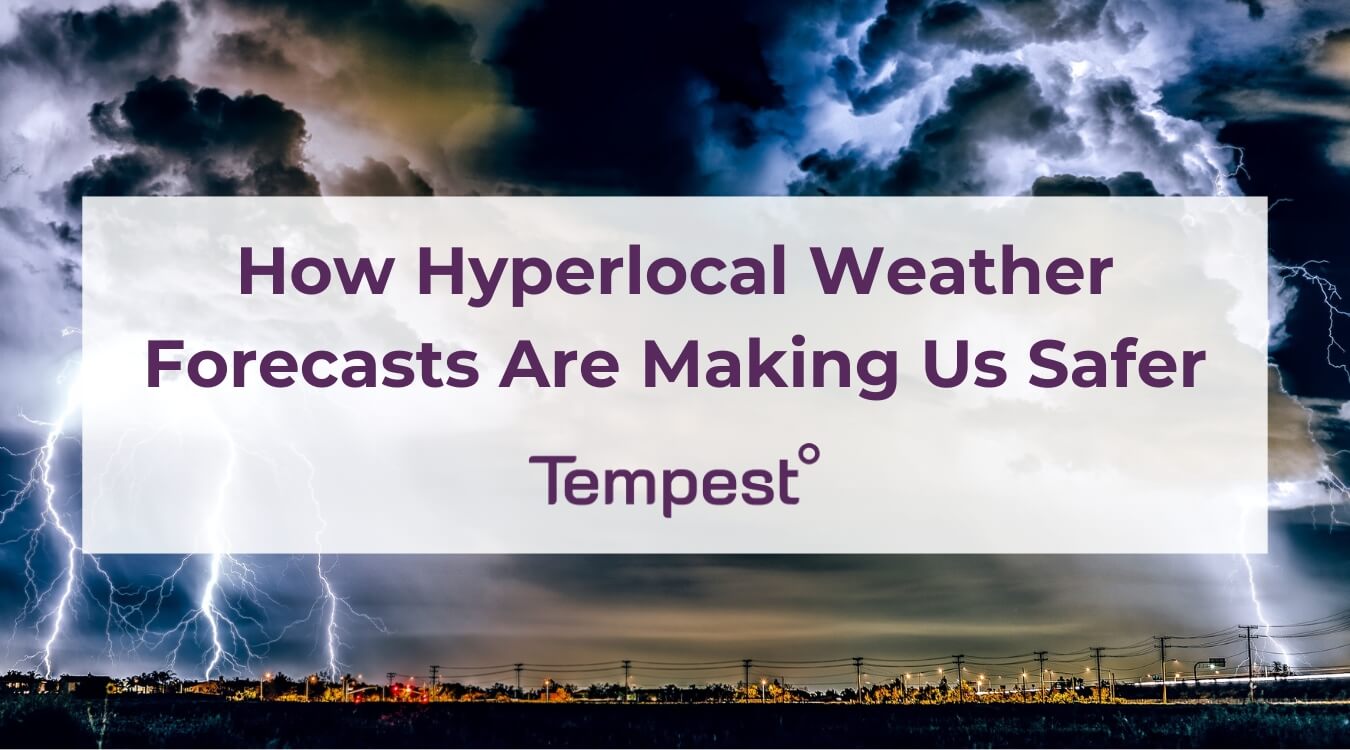After everyone evacuates due to a storm, the emergency responders’ job is just beginning. Knowing what hyperlocal weather is crucial for these brave individuals to save lives and remain safe themselves.
If you’re in the business of responding to emergencies, you know how critical precise weather forecasting is. Intense flooding, icy conditions, and other weather emergencies could put you and the people you’re trying to assist at risk. Hyperlocal weather provides ultra-precise, real-time data for specific geographic areas, down to a particular neighborhood or street block, making all the difference in response times and safety.
- What Is Hyperlocal Weather?
- How Are Hyperlocal Weather Forecasts Made?
- The Future Of Weather Forecasting And Weather Safety
Protect your emergency response team and community with TempestOne, the weather intelligence solution designed for emergency management.
What Is Hyperlocal Weather?
Hyperlocal weather is a means of gathering weather data of specific areas rather than relying on traditional forecasting methods, which provide data over a broader scope. Hyperlocal forecasting gathers microclimate weather details on temperature, wind, and precipitation, which may vary drastically within short distances.
Although this variation in weather details may not seem important, it becomes critical to those who must prepare for severe weather conditions, particularly for emergency responders to perform their rescue efforts effectively. Responders need to access the exact data for their coverage area, whether that’s current lightning risk, changing wind speeds, or incoming rainfall totals. These insights allow command centers to see what’s happening on the ground, not just what’s predicted regionally.
Rethink the accuracy of traditional weather forecasts when you learn about how accurate weather forecasts are.
How Are Hyperlocal Weather Forecasts Made?
In order to understand hyperlocal weather forecasts, it’s important to first understand how traditional forecasting works. Meteorologists report the local weather using broad-based means that cover large areas of a state or city. They rely heavily on global numerical weather models, satellites, major national radar networks, and sometimes even the farmer’s almanac to make their predictions. These predictions don’t take into consideration variations based on microclimates. Additionally, the information they gather is updated approximately every 6 hours.
Hyperlocal weather forecasts cover tiny areas, particularly a zip code or even a city block, taking into consideration variations from lakes, hills, valleys, and concrete buildings. Personal weather stations and artificial intelligence (AI) modeling gather massive amounts of real-time data that updates every few minutes. Traditional resources, along with local micro-radars, mobile device data, and other means to gather weather information, can now be used in minutes instead of every few hours. As a result, you’ll know if it will rain on your street within 10 minutes.
With TempestOne, this process goes a step further. The platform curates data from thousands of Tempest stations and National Weather Service advisories to build a complete picture of local risk, from lightning and flooding to hurricanes and extreme heat. Through the TempestOne Console interface, users can view all connected stations in one dashboard, overlay radar and satellite layers, and even configure custom alerts for specific response zones.
Discover why hyperlocal weather forecasts are so critical by learning how weather forecasts are made.
The Future Of Weather Forecasting And Weather Safety
Even with all the current advancements in weather forecasting, there is still room for significant improvement. AI will be at the forefront of these improvements, processing a massive amount of global and micro-climate data to provide faster, more accurate forecasting. The weather events taking place in your own backyard will be much more predictable than those in a friend or relative’s neighborhood a few suburbs or cities away.
For emergency managers, the future is already here. TempestOne for emergency management uses hyperlocal AI forecasts, along with its vast sensor network and cloud-based processing, to provide situational awareness in near real time. The system processes over one billion weather observations per day with millisecond latency, giving responders instant updates when conditions change.
Communities and departments across the country are already building local Tempest networks to expand their coverage. Fire stations, emergency services, and municipalities can install multiple stations across service areas or deploy mobile units in the field. each feeding real-time data back into the TempestOne platform. The result: faster, safer decision-making when every second counts.
Get Accurate Hyperlocal Weather Data With TempestOne Professional Weather Solutions
The future of safety is here, and professional weather solutions are making weather forecasts much more precise. Fueled by AI and a network of personal sensors, you’ll have accurate local weather where you stand, rather than relying on outdated broader technologies.
TempestOne offers more than weather data for emergency responders; it provides actionable intelligence. From configurable alerts and radar loops to lightning tracking and tropical cyclone updates, the platform delivers everything responders need to manage weather-related risks. Its reliability and build quality have been proven across more than 150,000 customers worldwide, with continuous calibration ensuring sensor accuracy.
Have the power of local weather in your hands by contacting us about TempestOne today!

